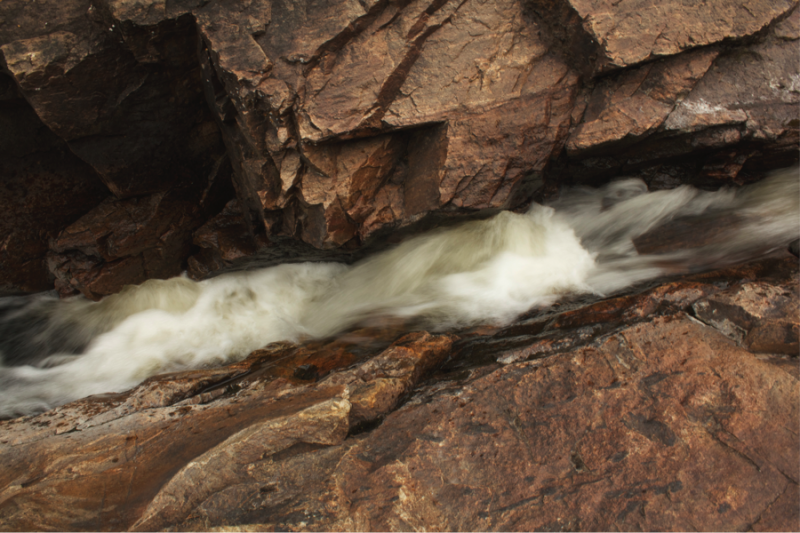
Funtography Tips
Knowing Your Resources
There is no lack of access to cameras these days. Many of the electronic devices we carry on our person, including smart phones and tablets, have some sort of camera built into them. This can be to your advantage when you come across something that seems worth capturing. While shooting with a traditional film camera may be a skillful art, shooting with digital cameras is the best way to learn because it’s practically free and allows you to take as many pictures as you want so you can keep the best ones.
If you’re a hobbyist like myself, you may find it hard to rationalize spending the money on equipment that you may never use. For the longest time, I felt limited by the equipment I had until I took a step back and discovered what I could do with a little more practice using what I already owned. Professional photographer Chase Jarvis, who created a book entirely of iPhone photos in addition to a photo editing app, introduced me to the motto “The Best Camera Is the One That’s With You.” Whether you’re using an iPhone or a DSLR (Digital Single-Lens Reflex) camera, the best way to learn is to just go out and shoot with the camera that’s with you most often.
I’m not a professional photographer, just a guy with a passion and I’m still learning new things everyday. I hope these tips will alleviate some of your frustrations and confusions about photography to help you create better photos without relying on luck alone.
Controlling The Scene
With smartphones or point-and-shoot cameras, you don’t have to think much about settings because they seem to be getting better and better at automatically reading the light. But there are a few things you can do to improve your technique:
1. Lose the flash. Many built-in flashes are problematic. They cast unnecessary direct light onto your subject, creating unflattering pictures with harsh contrast. Tip: Rather than using an external flash, learn to work with the natural light.
2. Follow the natural light. Spend some time trying to understand why natural light is the way it is. Most light has a dominant direction:
Top lighting. This can be the most common light outdoors, especially if you’re out shooting in the middle of the day. Hard sunlight that is directly above your subject can cast deep shadows downward. Tip: try going into the forest or shade and use the patches of light to your advantage (this is great for shooting in macro on the forest floor)
 Diffuse lighting. This happens when the clouds cover the sky and the light is dispersed. Tip: Learn to appreciate overcast days by getting up high and shooting down on a landscape rather than up toward the washed-out sky. You may find there is better color saturation in your picture.
Diffuse lighting. This happens when the clouds cover the sky and the light is dispersed. Tip: Learn to appreciate overcast days by getting up high and shooting down on a landscape rather than up toward the washed-out sky. You may find there is better color saturation in your picture.
 Front lighting. Exactly like it may sound, this will place the light source on the front of your subject and hide shadows behind. Tip: Be cautious of your own shadow being cast on your subject. Get low to the ground and try to use the reflection of the sun in the eye of your subject to add a nice sparkle effect.
Front lighting. Exactly like it may sound, this will place the light source on the front of your subject and hide shadows behind. Tip: Be cautious of your own shadow being cast on your subject. Get low to the ground and try to use the reflection of the sun in the eye of your subject to add a nice sparkle effect.

Side lighting. This will create a nice gradient from the side highlighted to the side shadowed. Tip: Shadows are necessary to show form and dimension, so use them to your advantage. Position your subject so that half is highlighted and the other half fades to shadow. You can also get above the subject and capture the long shadow it casts to give a sense of scale.

Backlighting. This can be the most challenging, yet rewarding light to work with. Your subject will generally appear dark and distinctly separate from the highlighted background. Tip: Put the sun behind wildlife to filter through their fur or feathers and create a halo around the subject. Shooting into the sun can create nice silhouettes and glowing effects on your subject.

3. Pay attention to foreground, middleground and background. Every piece of a photo should serve a purpose in what you want to capture. From the closest element to the farthest away, each element should be composed with purpose. Tip: Location is key when planning a photograph.

4. See the image before you take it. Think of some adjectives to describe what you want to portray and then try to capture one detail in your image that tells these words without saying them.

5. Try different angles. When you can, try not to snap an image and walk away. Spend some time getting several different angles on it. You may unexpectedly find later on that you like one more than the other. Experiment with where the horizontal, vertical, diagonal, straight or curved lines of a landscape are placed (one of the first things your eyes are drawn to in a photograph are the natural lines).


6. Plan the day out. One of the simplest tips any photographer can give you is to get out early in the day and early in the evening. The pinnacle of outdoor lighting is the hour just before or after sunset, known as the Golden Hour, when the light is much softer at a low angle to the horizon. There is even an online calculator to determine the best times for you to go out and shoot in the soft, golden light.

7. Take a closer look. Shooting in macro can be a fun and creative way for beginner wildlife photographers to practice their skills. Just remember that we may love wildlife but the feeling is not always mutual. Be careful not to spook your target when getting up close.

8. Watch where you step. It’s easy to get caught up in the moment and forget where you’re walking when you’re trying to get the shot. Try your best not to step on something you could harm, or that might harm you!
9. Rules are meant to be broken. No, we’re not talking about going out and getting into trouble by breaking the law… rules in photography are just a guideline to follow and there are always new tricks that break the traditional rules. For example, using the Rule of Thirds can be useful in some cases, but there are other ways to position your subject to portray what you want.
10. Try it your own way. Look at the work of professional photographers. You will begin to pick apart certain elements that make a photograph unique and try using them yourself. Developing your own style by learning from others can give you better guidance and perspective.
Now that you have a feel for creating better photos by harnessing the power at your fingertips, the best thing to do is to get out there and try it for yourself! Remember that lighting, timing and planning are key. For helpful tips on shooting with DSLR cameras, stay tuned for the next photography tips blog!


One of my favorite tips of all time: Take your camera with you! You can't take the perfect picture if you don't bring your camera!